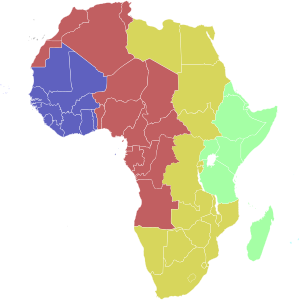
| Light Blue | Cape Verde Time (UTC−1) |
| Blue | Greenwich Mean Time (UTC) |
| Red | (UTC+1) |
| Ochre | (UTC+2) |
| Green | East Africa Time (UTC+3) |
| Turquoise | (UTC+4) |
Mauritius and the Seychelles are to the east and north-east of Madagascar respectively.
Algeria Standard Time or DPRA Standard Time is the time zone for Algeria. [1] It is 1 hour ahead of GMT/UTC (UTC+01:00) and is co-linear with neighboring Tunisia.